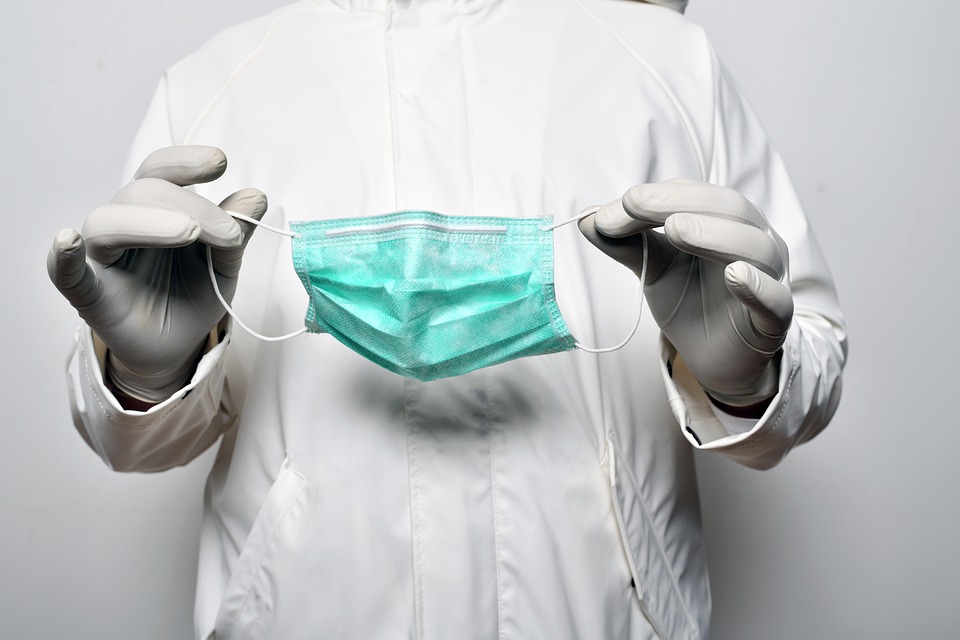The Safety and Efficacy of Masks
August 12, 2020
Tags: COVID-19, Education, Featured
With fall approaching, Utahns will be presented with the opportunity to further reduce the spread of COVID-19 and hasten our return to normal. As summer ends, many will be heading back to resume school and may experience increased interaction with others.
As a result, if we are to continue making progress in a return to a new normal, it is paramount that we achieve widespread mask use. While we have seen countless Utahns answer the call to don a facemask, there are some who still possess concerns about using them. Understandably, the flurry of scientific studies on the efficacy of facemasks can be difficult to sort through, even for those with experience in the scientific realm. As a bevy of labs and researchers throughout the globe have published findings on masks, it can be difficult to understand what all these findings mean.
Fortunately for Utahns, a team of researchers at Brigham Young University has reviewed 115 of these studies on COVID-19 and masks to assist laypeople in understanding where the scientific community stands on many of these issues.
Two of the most important findings from this study are:
- Masks Can Be Effective at Reducing Spread
During the beginning of the pandemic, there was some uncertainty about the nature of how coronavirus is spread. However, many now understand the main way the virus spreads is through small droplets of moisture produced when a person speaks, coughs, or sneezes. These aerosol droplets containing the virus can travel through the air and enter the body through the nose, mouth, or eyes. The science also demonstrates that these droplets can be unknowingly spread by an individual who is asymptomatic.
This reality is why persistent masking is so important. According to the BYU study, clear evidence exists in the scientific literature that face coverings can reduce the emission of droplets when speaking, coughing, or sneezing. Even homemade cloth masks can be effective in reducing this type of spread.
However, it is important to note the masks most commonly used by the public are not designed to eliminate the ingress of germs, but rather are intended to prevent egress. This type of masking is known as “source control,” meaning that you wear a mask to protect others, and they wear a mask to protect you.
The bottom line is that masks are a reliable method to inhibit the most common forms of spread.
- Masks are Not Dangerous to Wear
One of the most common concerns regarding the use of facemasks is that they pose a risk to otherwise healthy individuals. Despite this concern, the BYU study found no evidence confirming this belief in the 115 research papers they reviewed. On the contrary, science has demonstrated masks are highly safe and effective to wear, with minor side effects being rare.
Additionally, on social media, some posts have been shared claiming masking can cause “dangerous hypoxia (low oxygen) or hypercapnia (high carbon dioxide) in healthy individuals.” However, the BYU study finds no evidence that such claims are true. Certain individuals who have acute preexisting conditions can have difficulty breathing when wearing a mask, but they are in a slim minority of those who masks may prevent troubles.
You can find more information about this study here. We highly encourage Utahns to read this summary for themselves and share the information with their family and friends. In our day and age of limitless information, it is important we surround ourselves with reliable sources and consume trustworthy information.
Though we are beginning to see positive trends develop in our state, this is not the time to become complacent. All Utahns should take the decline in cases we are seeing as a call to redouble our efforts and accelerate our progress. Through masking where appropriate and good hand hygiene, we all can continue to keep one another safe.
###
Legal Disclaimer:
EIN Presswire provides this news content "as is" without warranty of any kind. We do not accept any responsibility or liability for the accuracy, content, images, videos, licenses, completeness, legality, or reliability of the information contained in this article. If you have any complaints or copyright issues related to this article, kindly contact the author above.
